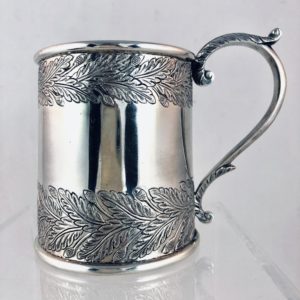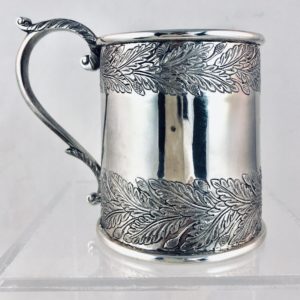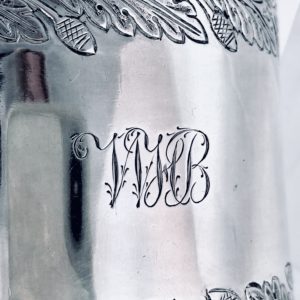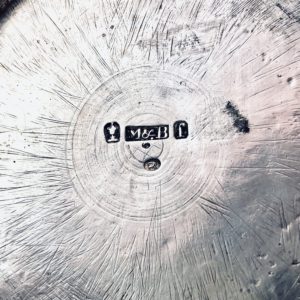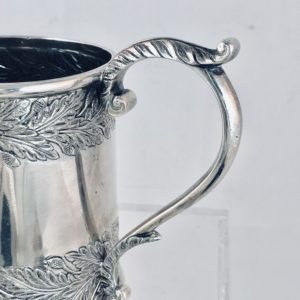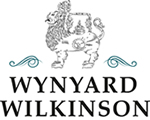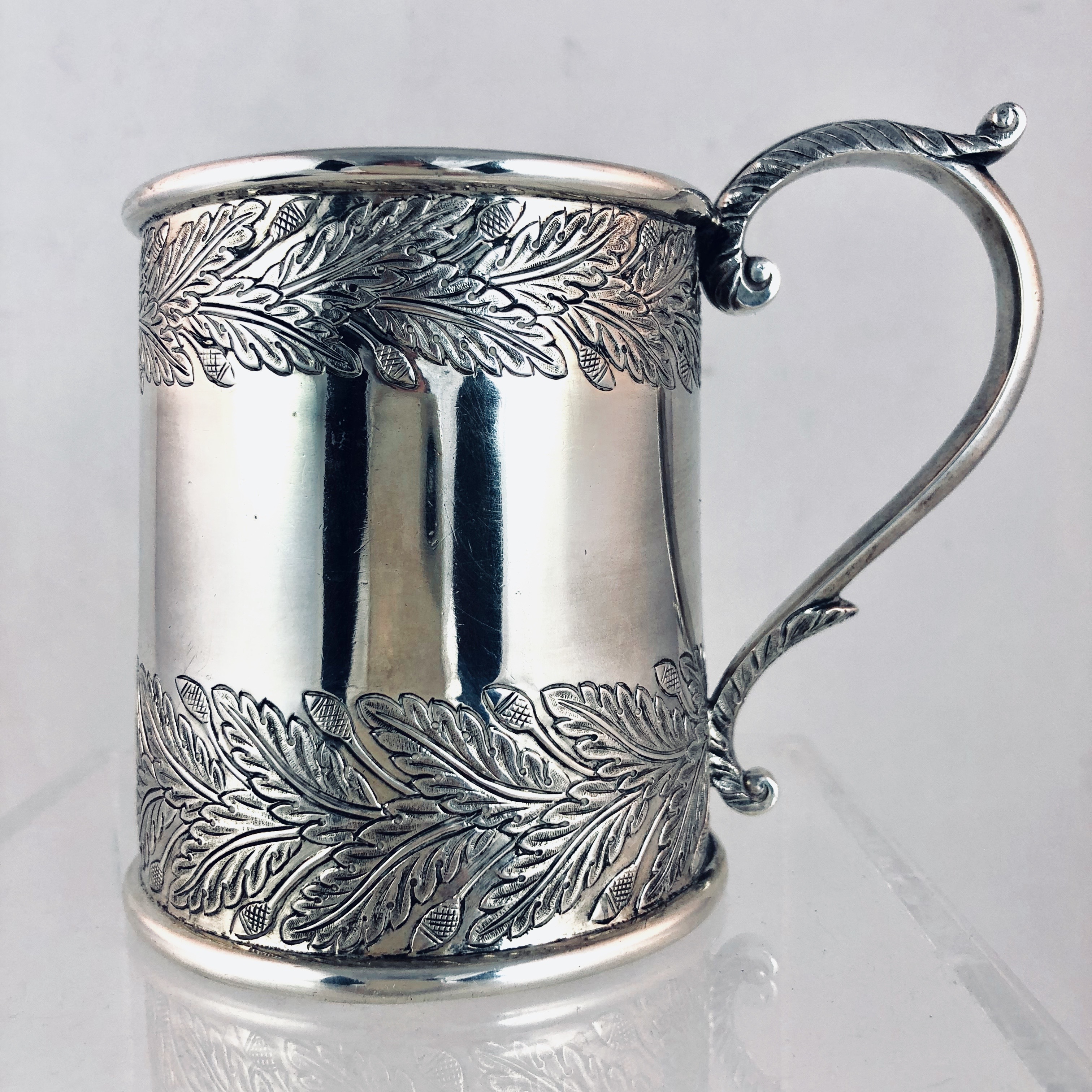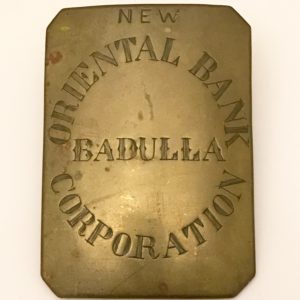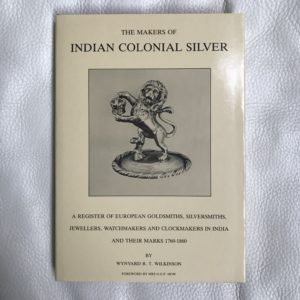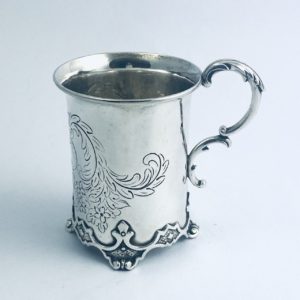Description
A heavy, circular, silver two-thirds pint mug with two chased decorative bands of oak leaves and acorns and an elegant C-scrolled, acanthus leaf-capped, cast silver handle. Initials are engraved at the front. The mug is made of a good gauge of silver with substantial wires at both rim and base; the base plate alone is struck with identifying maker’s marks.
Dimensions & Weight:
Diameter (at lip): 7.5 cm / 3 ins;
Height (to top of handle): 10.2 cm / 4 ins Weight: 263 gm / 8.5 ozT
Diameter of foot: 8.2 cm / 3 1⁄4 ins; Max. Capacity: 380 ml / 2/3 pint
Maker’s marks:
Three marks: an urn, the maker’s mark of an upper case ‘M & B’ in a rectangular punch, and a lower case ‘f’ appear near the centre of the base. This is consistent with ‘Mathies & Barron’ of Bombay. A separate mark, depicting a swan, indicates that at some time this mug has been imported to France.
Thomas Mathie (1802-38) arrived in India in 1815 with his father, and was immediately apprenticed to James Allan in Madras then turned over to George Gordon in 1818. Thomas subsequently formed a partnership in July 1828 with James Barron (1806-52), principally a watchmaker who had trained at McCabe & Strachan in Cornhill, London. The firm operated from 7, Forbes Street and later Rampart Row, in Bombay. The partnership ceased on Mathie’s death in 1838. For more information about Thomas Mathie and James Barron, see The Makers of Indian Colonial Silver, Wynyard R. T. Wilkinson, 1987, pp. 15 and 130-131.